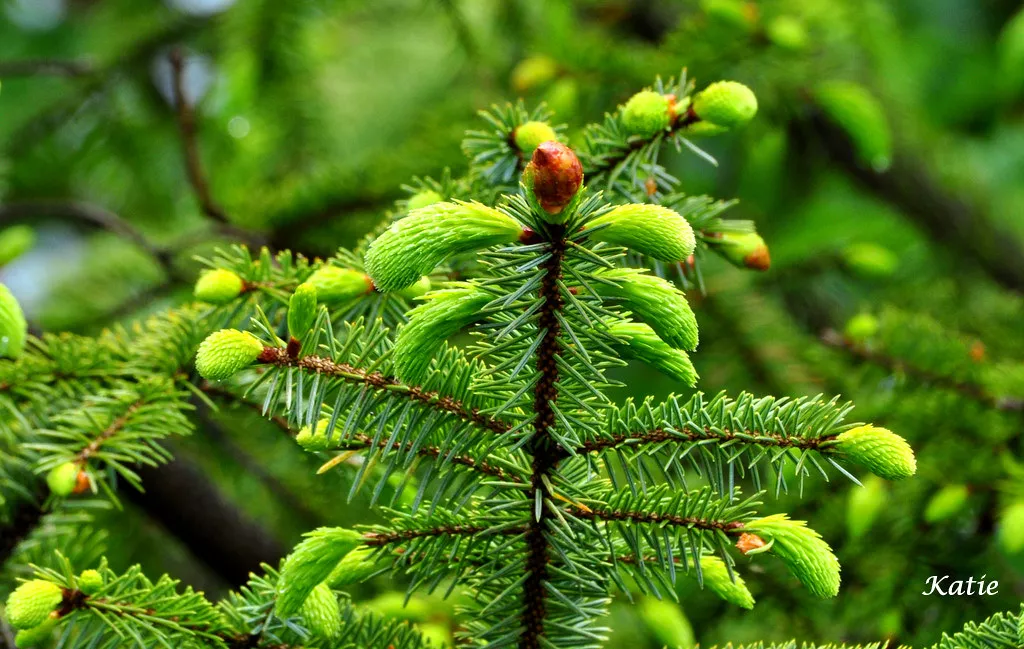Columnar Oak Tree And 10 Types Of Columnar Oak Trees
10 Types of Columnar Oak tree Columnar English Oak, Acorn Drop Oak, Crimson Spire Oak, Skyrocket Oak, Skyrocket Oak, Bonnie and Mike Oak, Kindred Spirit Oak, Regal Prince Oak, Chimney Fire Oak These different types of columnar oak trees vary in height, shape, and color, making them perfect for landscaping and adding visual interest to any space. With their unique features, they are often used as focal points or as part of a larger planting scheme. Overall, these are just a few examples of the many types of oak trees that can add beauty and character to any outdoor environment.
The Columnar Oak tree, exemplified by varieties like the Columnar English Oak (Quercus robur ‘Fastigiata’), is distinguished by its elegant and upright growth habit. This deciduous tree features a tall, slender form, making it an excellent choice for landscapes with limited space. Its architectural beauty lies in the vertical emphasis of its branches, creating a stately and symmetrical silhouette.
Throughout the seasons, the Columnar Oak transforms. In spring and summer, it adorns itself with lush green foliage, providing shade and visual interest. Come autumn, the leaves turn various warm hues before gracefully falling, revealing the tree’s intricate branching structure. In winter, the bare branches stand out against the sky, offering a unique and sculptural presence to the landscape.
Well-suited for urban and suburban environments, the Columnar Oak’s adaptability to various soil types and climates, coupled with its aesthetic charm, makes it a favored choice for parks, gardens, and residential areas, adding both vertical dimension and enduring beauty to outdoor spaces.
Understanding the Appeal of Columnar Oak Trees
Columnar oak trees, known for their towering, slender forms, offer a distinctive aesthetic that sets them apart from other tree varieties. Their upright branches create a stately silhouette, making them ideal for avenues, borders, or standalone focal points in gardens. The enchanting charm of these trees lies in their ability to provide vertical interest without overwhelming the landscape.
10 Types of Columnar Oak Trees
- Crimson Spire Oak: Known for its stunning red foliage in the fall, the Crimson Spire Oak is a favorite among landscape enthusiasts. Its narrow profile makes it suitable for tight spaces, and its adaptability to various soil types enhances its appeal.
- Kindred Spirit Oak: With an elegant, columnar shape, the Kindred Spirit Oak boasts glossy green leaves that transition to golden hues in the autumn months. This cultivar is particularly resilient, thriving in diverse climates.
- Skyrocket Oak: The Skyrocket Oak lives up to its name with a tall, narrow form that reaches for the sky. Its dense canopy provides ample shade, making it an excellent choice for urban landscapes where space is at a premium.::
- Bonnie and Mike Oak: The ‘Bonnie and Mike’ Oak (Quercus robur ‘Bonnie and Mike’) is a columnar oak known for its narrow, upright growth habit. With resistance to mildew, it features dense green foliage, making it an attractive choice for landscaping. This cultivar adds a touch of elegance to gardens and urban environments.
- Acorn Drop Oak: The Acorn Drop Oak (Quercus × warei ‘Iseli Fastigiate’) is a fastigiate hybrid oak with a compact form. Notable for its unique growth, it produces distinctive acorns. This columnar oak is an eye-catching addition to landscapes, offering both a slender profile and the charm of acorn-bearing branches.
- Sawtooth Oak (Quercus acutissima): The Sawtooth Oak (Quercus acutissima) is recognized for its upright growth and serrated leaves. Although not strictly columnar, its more vertical habit sets it apart. This oak species offers a distinctive silhouette with foliage that provides shade. A popular choice for landscaping, it combines aesthetics with a unique growth pattern.
- Urban Pinnacle Oak (Quercus x ‘Crimschmidt’): The Urban Pinnacle Oak (Quercus x ‘Crimschmidt’) is a cross between English and Swamp White Oak, featuring a tall and narrow growth habit. Known for its adaptability to urban settings, it brings vertical interest and resilience. This columnar oak is an excellent choice for landscapes where space is limited.
- Chimney Fire Oak (Quercus alba ‘Clemtwo’): The Chimney Fire Oak (Quercus alba ‘Clemtwo’) is a columnar oak variety, celebrated for its striking appearance. With a slender form and vibrant red fall foliage, it adds a touch of elegance to landscapes. This cultivar is prized for its unique combination of a compact shape and eye-catching autumn colors.
- Kindred Spirit Oak (Quercus robur ‘JFS-KW1’): The Kindred Spirit Oak (Quercus robur ‘JFS-KW1’) is a captivating columnar oak variety with a tall, upright form. Noted for its dense canopy and deep green leaves, it provides a stately presence in landscapes. This cultivar is admired for its elegant shape, making it an excellent choice for urban and suburban environments.
- Regal Prince Oak (Quercus × warei ‘Long’): The Regal Prince Oak (Quercus × warei ‘Long’) is a hybrid oak known for its narrow, upright growth and glossy leaves. With a distinctive form, it combines the elegance of English and Swamp White Oak varieties. This cultivar brings a regal presence to landscapes, making it a favored choice for diverse environments.
Planting and Caring for Columnar Oak Trees
To ensure the optimal growth and health of your columnar oak tree care, it is essential to pay attention to planting and care guidelines.
Planting Location
Select a location with well-draining soil and adequate sunlight. Columnar oak trees generally prefer full sun but can tolerate partial shade.
Soil Preparation
Prior to planting, enrich the soil with organic matter to provide essential nutrients. A slightly acidic to neutral pH is ideal for most columnar oak varieties.
Watering
Establish a consistent watering schedule, especially during dry periods. Deep, infrequent watering encourages the development of a robust root system.
Pruning
While columnar oak trees typically maintain their shape naturally, occasional pruning can help remove dead or crowded branches, promoting better air circulation.
The Environmental Benefits of Columnar Oak Trees
Beyond their visual appeal, columnar oak trees contribute significantly to the environment. Their dense foliage provides habitat and shelter for birds and insects, fostering biodiversity in your outdoor space. Moreover, these trees play a crucial role in carbon sequestration, helping mitigate the impacts of climate change.
Columnar Oak Trees Root System
Columnar oak trees, like many other oak species, possess a distinct root system that plays a crucial role in their stability, nutrient absorption, and overall health. These trees typically feature a deep and expansive root network, extending both vertically and horizontally into the soil. The vertical roots, known as taproots, anchor the tree securely into the ground, providing stability against wind and other environmental factors.
Additionally, columnar oak trees develop an intricate network of lateral or horizontal roots that spread outwards in search of water and nutrients. This enables them to efficiently extract essential elements from the soil, ensuring the tree’s growth and vitality. The lateral roots are particularly adapted to absorb water and minerals from a wide area, contributing to the tree’s resilience in various soil conditions.
While the primary function of the root system is to support the tree’s physical structure and facilitate nutrient uptake, it also plays a role in ecosystem interactions. The roots foster symbiotic relationships with mycorrhizal fungi, enhancing nutrient absorption and exchanging resources with neighboring plants. Overall, the columnar oak’s root system is a marvel of natural engineering, combining stability and resource efficiency to sustain these majestic trees in diverse environments.
Columnar Oak Growth Rate
The growth rate of columnar oak trees can vary depending on factors such as species, environmental conditions, and soil quality. Generally, columnar oaks are known for their relatively slow to moderate growth compared to some faster-growing tree species. On average, they may put on anywhere from 12 to 24 inches of new growth per year.
Young columnar oaks, during their early years, tend to have a more rapid growth phase, putting on more inches annually compared to mature trees. As they reach maturity, the growth rate often slows down, and the tree focuses more on the maintenance and development of its structure.
Environmental factors such as sunlight, water availability, and soil composition play vital roles in influencing the growth rate. In optimal conditions with well-drained soil, ample sunlight, and adequate water, columnar oaks are more likely to exhibit healthier and faster growth.
Despite their relatively moderate growth rate, the columnar oak’s slow and steady development contributes to the tree’s longevity and resilience. This deliberate growth strategy allows the tree to establish a robust root system and durable structure, ensuring its endurance over time. Gardeners and landscapers often appreciate the columnar oak for its graceful form and the enduring beauty it adds to landscapes.
Columnar English Oak Tree
The Columnar English Oak (Quercus robur ‘Fastigiata’) is a majestic and unique cultivar known for its upright, columnar growth habit. This deciduous tree exhibits a tall, narrow silhouette, making it an excellent choice for confined spaces or formal landscapes. The tree typically reaches heights of 50 to 70 feet, with a spread of only 15 to 20 feet, providing vertical interest without taking up excessive lateral space.
Its distinctive shape and deeply lobed, green foliage add to its ornamental appeal. The leaves turn a rich brown in autumn before falling, offering a beautiful seasonal display. The Columnar English Oak is hardy and adaptable, thriving in a variety of soil types and climates. Its compact form and resilience make it a favored choice for urban environments, where space may be limited, and its stately presence enhances the aesthetic value of parks, gardens, and avenues.
columnar oak trees in winter
In winter, columnar oak trees undergo a series of changes that contribute to their adaptation to colder temperatures. The deciduous nature of these trees means that, during late autumn and winter, the leaves of columnar oak trees turn various shades of brown before eventually falling. This process, known as senescence, is part of the tree’s strategy to conserve energy and water during the winter months.
The bare branches of columnar oak trees reveal their structural elegance, and in winter, the tree’s silhouette becomes a distinctive feature in the landscape. Without the foliage, the intricate branching pattern is more visible, creating a striking and sculptural effect against the winter sky.
The root system of columnar oak trees continues to play a vital role in winter, anchoring the tree securely in the soil and facilitating nutrient uptake, even in colder conditions. Despite the dormant appearance, the tree is still alive, and the winter period is a crucial part of its life cycle, preparing for the renewal of growth in the upcoming spring. Winter provides a unique opportunity to appreciate the architectural beauty of columnar oak trees and their resilience in the face of seasonal changes.
Columnar Oak Trees Ontario
Columnar oak trees can thrive in Ontario’s diverse climate, providing a distinctive and elegant presence in the landscape. Species like the Columnar English Oak (Quercus robur ‘Fastigiata’) or similar cultivars may be suitable for the region. These trees exhibit a tall, narrow form, making them well-suited for urban and suburban settings where space is limited.
In Ontario’s cold winters, the deciduous nature of columnar oaks means their leaves turn various shades of brown and fall, revealing the tree’s graceful branching pattern. These trees are generally hardy and adaptable to a range of soil types, with the ability to withstand the region’s temperature fluctuations.
Their resilience and aesthetic appeal make them popular choices for parks, streetscapes, and residential landscapes, contributing to the natural beauty of Ontario while providing shade and habitat for local fauna. Gardeners in Ontario appreciate the columnar oak for its year-round interest and ability to thrive in the local climate.
Columnar Oak Tree Colorado
Columnar oak trees are well-suited for the diverse climate of Colorado, offering both aesthetic appeal and adaptability. Species like the Columnar English Oak (Quercus robur ‘Fastigiata’) or similar cultivars are suitable for the region. With their upright, narrow form, these trees provide vertical interest while fitting into smaller spaces common in urban and suburban environments.
In Colorado, where winters can be harsh and summers warm, the deciduous nature of columnar oaks means they undergo seasonal color changes. In the fall, their leaves turn various shades of brown, creating a picturesque display before winter. The bare branches of the tree then reveal a sculptural silhouette against the snow-covered landscape.
The adaptability of columnar oak trees to a variety of soil types and their tolerance to temperature extremes make them resilient in Colorado’s conditions. These trees contribute to the state’s natural beauty, offering shade, habitat, and year-round visual interest in parks, residential areas, and along streetscapes.
Frequently Asked Questions:
What is a columnar oak in English?
A columnar oak refers to an oak tree with a tall, narrow, and upright growth habit. Notable for its slender silhouette, this type of oak, like the Columnar English Oak or various cultivars, is favored for landscaping, particularly in urban and confined spaces, where its vertical form adds aesthetic and structural appeal.
What is the smallest oak tree in the world?
The smallest oak tree in the world is the Dwarf Chinkapin Oak (Quercus prinoides). This deciduous shrub-like oak typically grows up to 4 to 6 feet in height. It is characterized by its compact form, lobed leaves, and is well-suited for small gardens or landscapes, providing a charming and manageable oak option.
What is special about the oak tree?
Oak trees hold special significance due to their longevity, strength, and cultural symbolism. Known for providing durable wood, valuable timber, and diverse habitats, oaks are often revered in folklore and traditions. Their resilience, adaptability, and ability to support a wide range of wildlife contribute to their special status in various cultures.
Conclusion
In conclusion, embracing the elegance of columnar oak trees can elevate the aesthetics of your landscape while contributing to environmental well-being. Whether you opt for the vibrant Crimson Spire Oak, the resilient Kindred Spirit Oak, or the towering Skyrocket Oak, each variety brings its unique charm. By following proper planting and care practices, you can ensure these majestic trees thrive and stand as enduring symbols of natural beauty in your surroundings. Explore the world of columnar oak trees, and witness the transformation they can bring to your outdoor haven.
Related Articles:
10 Best Small Evergreen Trees with Non Invasive Roots
 Dr Ahsanur Rahman, PHD
Dr Ahsanur Rahman, PHDPine Tree Rescue: Saving Pine Trees with Brown Needles
 Dr Ahsanur Rahman, PHD
Dr Ahsanur Rahman, PHD







